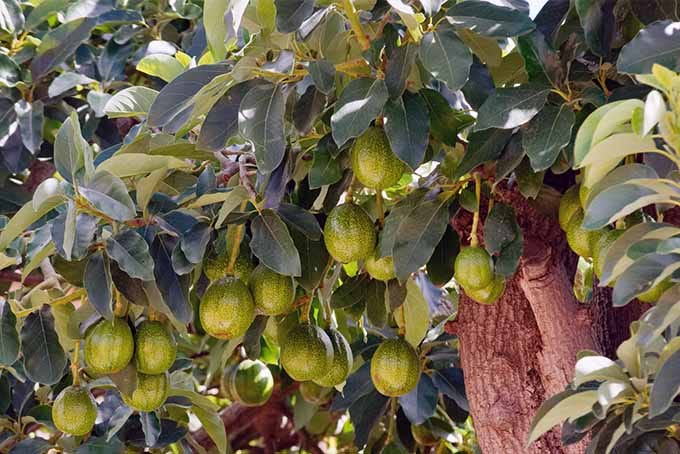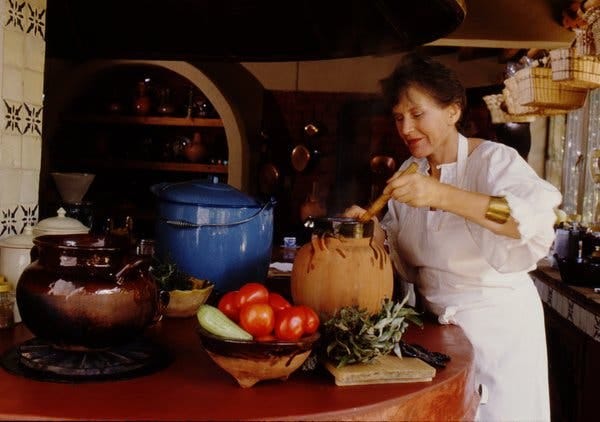Smear avocado on your face. Or make the Superbowl snack essential
A recipe for Diana Kennedy's authentic guacamole
It’s February. It’s felt like February since the day after Christmas. I defy you to come up with anything cheery to eat grown within 50 miles that you haven’t been eating since November. Animals are more sensible than humans - they recognise there’s little to keep us buoyant until April heralds fresh spring produce, so they may as well curl up and sleep.
I’m thinking a disquisition on the avocado might do the spirit-raising trick. In Europe, these have relinquished their status as a ‘treat’. With enough of a year-round presence in supermarkets large or limited, they have become a mainstream staple to be considered almost local if you are blithely happy to ignore the facts.
Back when I lived in the Soviet Union, expats who went by train on an R & R weekend from Moscow to Helsinki would phone round the foreign community to ask if anyone wanted anything brought back from The West. It was always an avocado, the representation of the decadence we felt deprived of.
Soviet customs officials at the border were tacitly understood to leave returning expats alone. But on one occasion, a woman who had filled two empty suitcases wall-to-wall with avocados was asked to open them up. She realised when the two Soviet border guards brought out their confiscation forms the avocados would not be going back to Moscow but to the border guards’ own kitchens. So when they each took one out, rattled it and sniffed it, then asked, “What do you do with these?” she replied, “You boil them very slowly for four hours.”
The avocado has had a remarkable and speedy rise in ubiquity and popularity. It was Gwyneth Paltrow who repositioned it from couch-potato dip to metrosexual breakfast with her recipe for avocado on toast - one of her less bonkers developments - in ‘It’s All Good’, her 2013 ‘clean eating’ cookbook. Her followers, people young enough to still look passable in yoga clothing, then made it A Thing. These are the same people who have been responsible for a record-breaking rise in visits to A&E (Emergency Departments) at a hospital near you with stab wounds in their palms, the result of being ignorant of the trick to removing an avocado’s stone safely. (Slice it in two then gently squeeze the sides of the avocado. The stone will pop out. If the avocado isn’t ripe enough for that to happen, cradle the half containing the stone in the palm of your hand with your digits below the rim, and allow the middle of a sharp blade to stab into it. Twist to release the stone now stuck to the blade.)
In Britain, lead supermarkets Marks & Spencer and Sainsbury’s both claim to have been the first to sell the avocado, in the 1960s. More recently, avocados have enjoyed the third largest increase in sales of any grocery item. But they are not a new vegetable - or rather, berry. (It’s having a stone which qualifies the avocado as one.)
The āhuacatl is a Nahuatl word that, reasonably enough, also means testicle. Central Mexican Aztecs apparently used the avocado as a sex stimulant, though along with their practice of human sacrifice, they may not have wanted you to know that. When the Spanish conquistadors discovered the avocado, they named it ‘aguacate’. European sailors, meanwhile, went for ‘Midshipman's Butter’ and spread it on their hardtack biscuits.
These days, people have found other colourful uses for it. Californians smother them over pizza. Chileans top them with hot dogs. The Japanese slice them into sushi rolls. Nicaraguans stuff them with cheese and bake them in batter. Indonesians make a challenging cold drink of avocado, rum, milk and, um, coffee. Colombians sliver them into soups. Koreans, who have marvellous complexions, squish them with milk and smear them on their faces.
The berry is thought to have originated in Puebla in Mexico, although a stone discovered buried with Peruvian mummies is evidence of them being eaten there around 750 BC. How it survived so many centuries before man became a farmer is a puzzle. Fruits and vegetables are generally propagated by the animals who eat them excreting their pips and seeds. Reflect a minute upon the size of the avocado stone - although dinosaurs were probably a better fit, so to speak. Avocado trees are partly self-pollinating, which may have helped.
Horticulturist Henry Perrine first planted the avocado in the US, in Florida in 1833. Then in 1871, Judge R.B. Ord planted a tree in Santa Barbara, California. By the early 1900s, California farmers had developed groves of them but found it hard to popularise the unfamiliar pear with an unpronounceable name (although early Americans did call it ‘alligator pear’, probably not a marketable name), so settled on ‘avocado.’
The first person to have given it that title was the 17th century English physician and naturalist, Hans Sloane, who referenced it in a 1696 index of Jamaican plants. A Spanish conquistador, historian, writer and botanist, Fernández de Oviedo,
is said to have been the first European to have actually eaten it. ‘A paste similar to butter,’ he reported, ‘and of very good taste.’
But while avocados became a commercial crop in the early 20th century popular in Florida and California, they weren’t widely accepted across the US. Then the California Avocado Commission hired a PR firm to promote them. With the goal of benefitting from the Super Bowl, TV’s top sofa-snack-guzzling sports event, the company came up with the Guacamole Bowl. It persuaded NFL players to share their favourite guacamole recipes, even if they may never have eaten an avocado before Hill & Knowlton ‘encouraged’ them to do so. (I don’t know what that promotion was like, but this completely wacky Monty Python-esque commercial from the Super Bowl is my own favourite.)
US sales rocketed by almost 70 percent. Now, every Super Bowl Sunday, more than 45 million kilos/99 million pounds of avocados are sold. During the rest of the year, American eat over 3kg/6.5lbs of them a head, up from pre-1989’s 0.5kg/1lb per capita.
At more than 34 percent of the market, Mexico is still the main global provider. But as well as in Florida and California, it’s grown further south, across the Caribbean, and more recently in Israel and round the Mediterranean basin.
With February 13th the date of the Superbowl this year, and February 14th Valentine’s Day, here is a suitably decadent recipe for guacamole. You may think you can create good ‘guac’ without a recipe, but try this one. It comes from Central Mexico and the research of English authority on authentic Mexican cuisine, Diana Kennedy, who died last year at 99 at her home in Michoacán, Mexico.
4 tablespoons finely chopped fresh coriander
1 to 2 serrano chilies, stemmed and finely chopped, depending on how much heat you like
2 tablespoons finely chopped white onion
Sea salt
3 ripe avocados, halved and pitted
285g grape or cherry tomatoes, finely chopped
Tortilla chips, to serve
In a bowl, combine 2 tablespoons of the coriander, the chilies, onion, and 1/2 teaspoon salt. If you don’t own a pestle and mortar, mash the mix in a small bowl with the bottom of a dry tea cup until a rough paste forms, about one minute.
Scoop the avocado flesh into another bowl and coarsely mash with a potato masher or fork. Stir in the coriander paste and half the tomatoes until combined. Taste and season with salt to taste.
Transfer to a serving bowl and sprinkle with the remaining coriander and tomatoes and serve with nachos or tortilla chips to dip.










Thanks, Kate, that's very much appreciated! Never dreamt that signing up for Julia Watson's blog would spark off this sort of thing!
Probably the most reliable method.